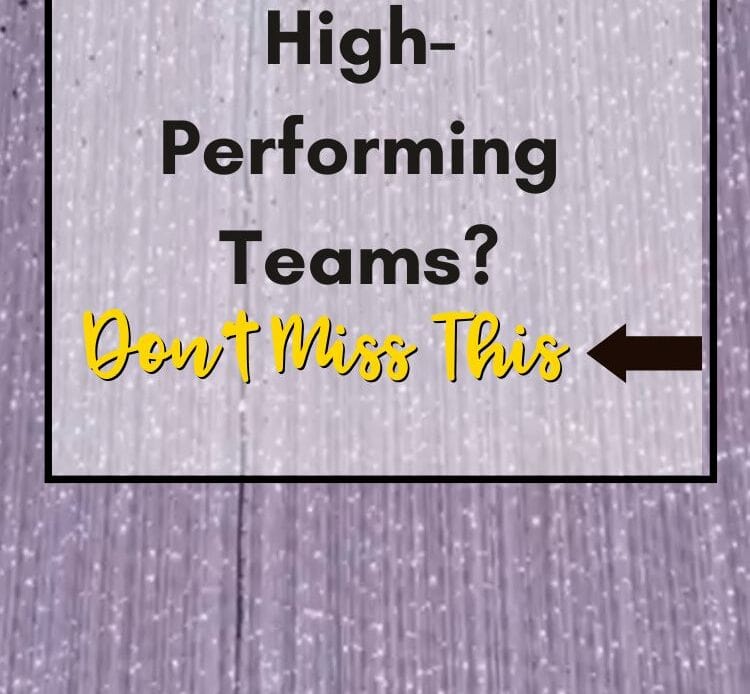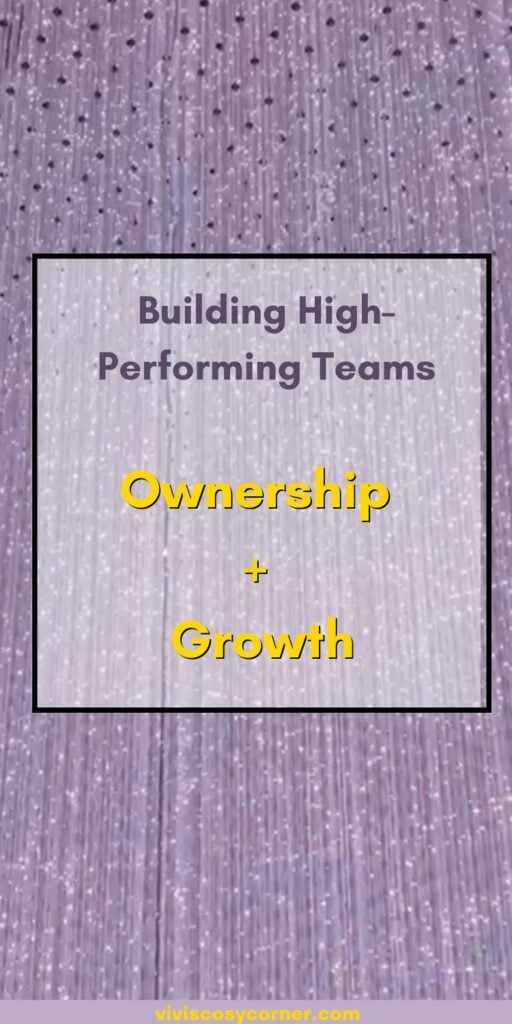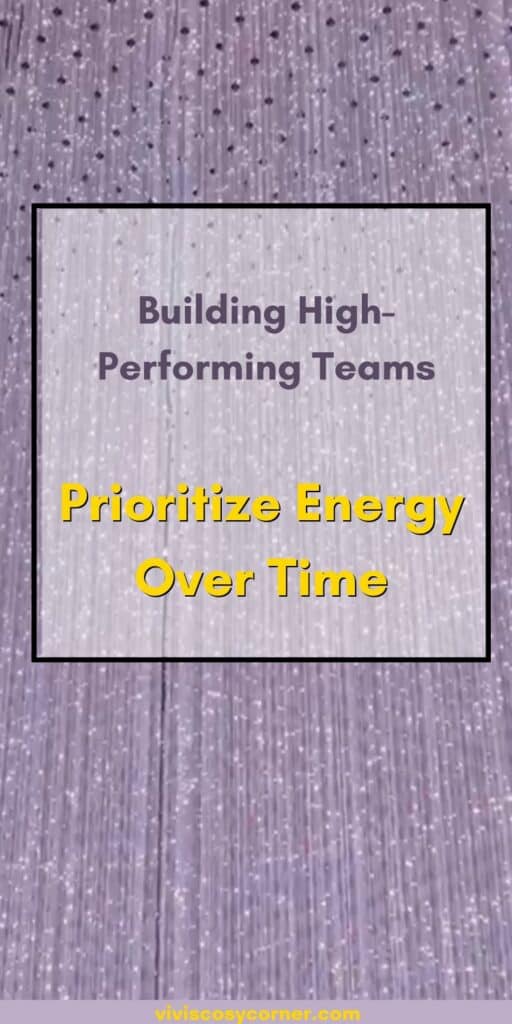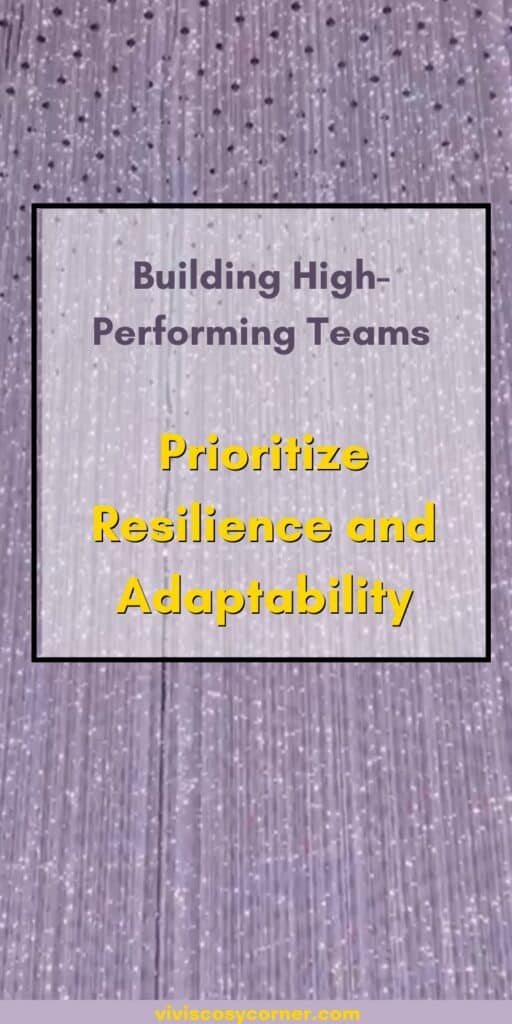
Building a high-performing team isn’t about just setting goals and hoping for the best. It’s about creating a culture where people feel valued, energized, and empowered to bring their best selves to work every day. It’s about fostering trust, encouraging growth, and turning challenges into opportunities.
Let’s go beyond conventional wisdom and explore eight strategies that transform good teams into extraordinary ones.

Lead with Vision, Align with Purpose
Vision is the heartbeat of great leadership.
A transformational leader doesn’t just set goals, they inspire with a clear, compelling vision that serves as the team’s guiding star. Without it, a team drifts like a ship without a compass, unsure of its direction.
Aligning the team around a clear vision and shared goals is essential for direction and engagement. When a shared vision is in place, it unites everyone around a common purpose, fueling motivation and driving action beyond daily tasks.
- Try this: Craft a vision statement together and revisit it regularly. Encourage team members to connect their individual roles to the bigger picture.
- Why it matters: When people see how their contributions drive a greater mission, they’re more engaged and driven to excel.

Build Trust and Psychological Safety Through Vulnerability
High-performing teams aren’t afraid to be human, and aren’t just built on skills. They’re built on trust which is forged when leaders have the courage to be real.
Creating a psychological safe environment for open communication and risk-taking is fundamental for high-performing teams. When leaders openly share:
- Their failures (“Here’s where I messed up…”)
- Their doubts (“I’m not sure either, let’s figure this out”)
- Their challenges (“This is hard for me too”)
…they create psychological safety, the bedrock of innovation and bold ideas. The best ideas emerge when people aren’t afraid to sound stupid.
- Try this: Replace “Who’s to blame?” with “What can we learn?”
- Why it works: Google’s Project Aristotle found psychological safety was the #1 predictor of team success. At Pixar, “plussing” (building on ideas with “yes, and…”) turns conflict into creative fuel.
Teams need human leaders who model vulnerability to give others permission to do the same; leverage their values to create safe spaces for risk-taking, and replace “I know” with “let’s learn”.
Because the most powerful leadership tool isn’t authority, it’s accessibility.

Foster Ideation Through Cross-Pollination
The best ideas aren’t born in isolation, they emerge at the intersection of diverse perspectives.
- Why This Works: Teams that bridge knowledge gaps between departments, industries, and disciplines consistently outperform siloed groups. MIT research shows “idea brokers” generate 50% more innovative solutions.
- Try this instead:
- Create “innovation exchanges” where team members rotate through different departments for short-term projects.
- Host quarterly “cross-industry inspiration sessions” with guest speakers from unrelated fields.
- Reward employees for building external networks with “exploration hours” each week. This inspires them to foster communication with several other networks besides their own.
- Create “innovation exchanges” where team members rotate through different departments for short-term projects.
- Real-world example: At 3M, engineers regularly consult with marketing teams and customers during early R&D, leading to game-changing products like Post-it Notes from “failed” adhesive research.
Innovation isn’t about working harder in your lane, it’s about discovering new highways.

Ownership + Growth: The Rocket Fuel for High-Performing Teams
The most powerful teams don’t just complete work, they own it. And ownership doesn’t stop at responsibility, it ignites when paired with relentless growth. Here’s how to build this cycle:
Empowerment Through True Ownership
(Where motivation meets accountability)
- Delegate like a coach: Give the what, not the how.
- Celebrate “smart failures”: Reward risk-taking that leads to learning.
- Public recognition: Spotlight contributions in team meetings.
At Netflix, the “Freedom & Responsibility” culture empowers employees to make million-dollar decisions without approvals, resulting in groundbreaking innovations. Netflix “chooses to trust in the abilities and judgment of its team, fostering a culture that promotes accountability and inspires employees to take ownership of their work. This courageous embrace of freedom and responsibility sets Netflix apart as a trailblazer in corporate culture”.
Growth Through Continuous Learning
(Where skills meet evolution)
- Weekly “skill shares”: Team members teach each other for 30 mins.
- Cross-functional “safaris”: Spend a day shadowing another department.
- Feedback “flash chats”: 5-minute real-time peer feedback sessions.
The LinkedIn Workplace Learning Report 2022 reported that teams that learn together show 47% higher engagement.
The Growth Feedback Loop
(Where improvement meets momentum)
Annual reviews won’t cut it. High-performing teams thrive on real-time, constructive feedback that fosters learning, not fear. Shift from “performance reviews” to continuous growth conversations. Try:
- Learning Retrospectives: Monthly “What worked? What will we try next?” Instead of asking “What went wrong?, ask What did we learn?“
- Feedforward Sessions: “How can I support your growth this quarter?”
- Progress Celebrations: Recognize efforts, not just outcomes.
Why This Works: Ownership without growth leads to stagnation. Growth without ownership lacks accountability. Together, they create teams that adapt, innovate, and outperform.

Prioritize Energy Over Time: Work Smarter, Not Harder
High performance isn’t just about working harder or longer, it’s about working smarter.Time is finite, but energy is renewable. Instead of managing time down to the last minute, help your team optimize their energy levels for peak performance.
- Try this: Encourage team members to identify their most productive hours and align high-impact work accordingly. Introduce “energy breaks” for movement, mindfulness, or connection.
- Why it matters: Teams that manage their energy, not just their schedules, are more creative, focused, and resilient.

Cultivate Micro-Moments and Celebrate Progress
High-performing teams are driven by goals, thrive on strong relationships and shared victories. Yet, in the rush of deadlines and deliverables, meaningful connections and small wins often go unnoticed.
- Foster Micro-Moments of Connection: Small, intentional interactions, like a quick “kudos round” in meetings or a rotating coffee chat strengthens camaraderie, trust, and engagement.
- Celebrate Progress, Not Just Big Wins: Success isn’t just about reaching the finish line; it’s about recognizing the journey. Acknowledging small victories keeps motivation high and fuels long-term success. Create a “win wall” where team members can post and celebrate small victories, or host monthly “reflection sessions” to acknowledge progress and lessons learned.
- Why it matters: When people feel connected and appreciated, they’re more engaged, collaborative, and committed to shared goals. Celebrating the journey builds momentum, reinforces positive behaviors, and reminds the team why their work matters.

Embrace Healthy Conflict
Conflict isn’t the enemy of high performance, avoidance is. Teams that engage in healthy, respectful debate are more innovative and effective.
- Try this: Teach your team the art of “disagreeing well.” Use frameworks like “Yes, and…” to build on ideas, even when there’s disagreement.
- Why it matters: Constructive conflict leads to better decision-making and ensures that diverse perspectives are heard and valued.

Prioritize Resilience and Adaptability
In a fast-changing world, agility isn’t optional, it’s survival. The best teams embrace change, adapt quickly, and see setbacks as stepping stones.
- Try this: Reframe challenges as opportunities. Instead of saying We failed, say We experimented and learned.
- Why it matters: Resilient teams bounce back faster, innovate more, and thrive under pressure.

Great Teams Are Built Intentionally
The most successful high-performing teams don’t just meet expectations, they surpass them by fostering trust, embracing learning, and creating a culture of excellence.
Which of these principles will you apply to your team first? Let’s start the conversation!
Thank you for being a VCC reader.

